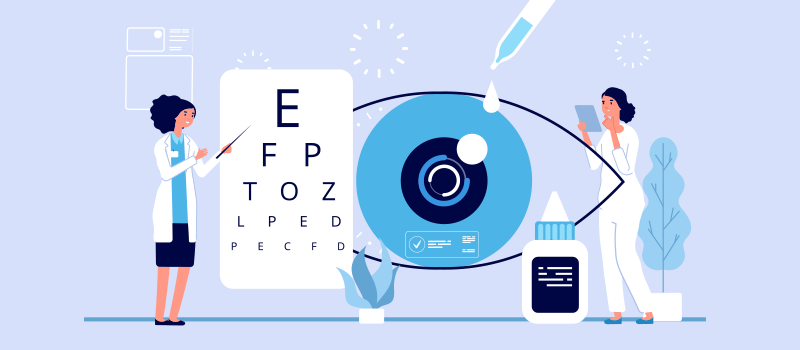Premier Refractive Surgeries in AL: Advanced Techniques at Our Clinic
Premier Refractive Surgeries in AL: Advanced Techniques at Our Clinic
Blog Article
Exploring the State-of-the-Art Technologies Used for Diagnosing and Dealing With Eye Problems
In the world of ophthalmology, the advancement of technology has actually significantly improved the devices readily available for identifying and dealing with various eye conditions. From innovative imaging technologies that supply thorough insights into eye structures to robotic-assisted medical procedures that use unrivaled accuracy, the landscape of eye care is regularly advancing.

Advanced Imaging Technologies
Advanced Imaging Technologies have changed the field of ophthalmology by giving specific and in-depth visualization of the eye frameworks. Optical Coherence Tomography (OCT) stands out as a crucial technology in this realm. OCT uses light waves to capture high-resolution cross-sectional photos of the retina, permitting the identification of minute structural adjustments. This non-invasive method help in the early detection and surveillance of various eye problems such as macular deterioration, diabetic retinopathy, and glaucoma.
Furthermore, Fundus Photography is one more crucial tool in ophthalmic imaging. This method includes catching thorough photos of the back of the eye, including the retina and optic disc. Fundus Photography helps in documenting the development of eye illness, reviewing therapy efficiency, and enlightening patients about their eye health.

Robotic-Assisted Operation
Robotic-assisted operations have actually significantly advanced the capabilities of ophthalmic surgical treatment, ushering in a new age of precision and efficiency in treating various eye conditions. By integrating robotic technology into operations, eye doctors can attain unmatched precision and control, bring about boosted person end results.
Among the main benefits of robotic-assisted surgery in ophthalmology is the enhanced mastery and security it uses to specialists. The robotic arms can execute specific motions with a high degree of accuracy, permitting fragile procedures with minimal invasiveness. This degree of accuracy is particularly advantageous in surgeries involving the retina, where even small errors can have significant effects for an individual's vision.
Additionally, robotic-assisted surgical systems give real-time imaging and comments to the cosmetic surgeon, allowing them to make educated decisions throughout the treatment. This technology boosts the specialist's situational awareness and permits for modifications to be made promptly, making certain ideal outcomes for the client.
Artificial Intelligence in Diagnostics
With the evolution of cutting-edge innovations enhancing medical accuracy in sensory treatments, the combination of Artificial Knowledge in diagnostics has arised as a critical growth transforming the field of eye care. Expert System (AI) algorithms are being significantly utilized to assess complex information from imaging technologies like optical comprehensibility tomography (OCT) and fundus photography to help in the very early detection and precise medical diagnosis of various eye conditions. These AI systems can effectively recognize patterns and anomalies in pictures that may not be noticeable to the human eye, enabling quicker diagnosis and therapy preparation.
AI formulas can additionally forecast disease progression, recommend customized treatment strategies, and visit this site right here assess the effectiveness of interventions. By improving the diagnostic process, AI not only enhances the efficiency of eye care professionals however also improves patient outcomes by enabling prompt treatments. As AI remains to breakthrough, its duty in diagnostics is anticipated to broaden, using new possibilities for early intervention and personalized therapy in the area of resource ophthalmology.
Genetics Therapy Developments
In the realm of ophthalmic innovations, current strides in gene therapy innovations have triggered considerable passion amongst scientists and health care professionals alike. Genetics treatment holds enormous promise in revolutionizing the therapy of different eye problems by targeting the underlying genetic causes. By introducing hereditary product into cells to make up for irregular genes or to give an absent gene, gene treatment uses an individualized strategy to resolving inherited eye problems such as retinitis pigmentosa, Leber hereditary amaurosis, and others that were previously taken into consideration untreatable.

As research study in gene treatment remains to development, the potential for customized therapies for a larger variety of eye problems grows, providing new wish for individuals with genetic eye conditions.
Online Reality Recovery
Online reality recovery has arised as an innovative method in boosting the healing and recovery procedures for individuals with different visual problems. refractive surgeries in al. By simulating real-world settings through immersive modern technology, online fact provides an one-of-a-kind platform for vision treatment and recovery. This cutting-edge method enables people to take part in interactive exercises and tasks developed to boost visual acuity, deepness understanding, eye sychronisation, and total visual performance
One trick advantage of online fact rehabilitation is its capability to tailor treatment programs based upon the details needs and capabilities of each person. Via real-time feedback and tracking, find out medical care professionals can track development, change treatments, and provide customized treatment to maximize outcomes. Furthermore, online fact modern technology can create a controlled and safe area for people to exercise aesthetic jobs, get over challenges, and build confidence in an online setting before transitioning to real-world situations.
Verdict
To conclude, the developments in imaging innovations, robotic-assisted surgical procedures, expert system diagnostics, genetics treatment technologies, and digital fact recovery have actually dramatically boosted the medical diagnosis and therapy of eye problems. retina service near me. These advanced innovations have transformed the field of ophthalmology, allowing for more exact and reliable procedures. As technology remains to advance, the future of eye treatment looks appealing with the capacity for a lot more innovative solutions to boost individual results
In the realm of ophthalmology, the advancement of modern technology has considerably enhanced the devices offered for diagnosing and dealing with different eye conditions. Fundus Digital photography helps in documenting the development of eye illness, evaluating therapy effectiveness, and educating people regarding their eye health.
Synthetic Intelligence (AI) formulas are being increasingly made use of to examine complex information from imaging innovations like optical coherence tomography (OCT) and fundus digital photography to assist in the very early detection and precise diagnosis of different eye conditions.In final thought, the developments in imaging modern technologies, robotic-assisted surgeries, fabricated intelligence diagnostics, genetics therapy developments, and digital truth recovery have substantially improved the diagnosis and therapy of eye conditions. As innovation proceeds to develop, the future of eye treatment looks encouraging with the capacity for also more innovative remedies to enhance individual outcomes.
Report this page